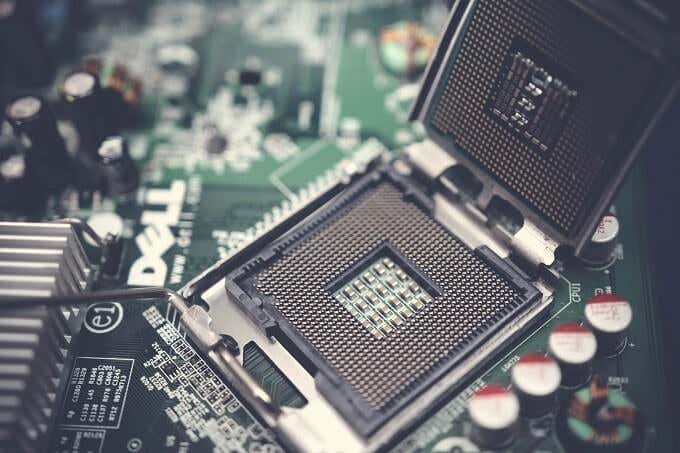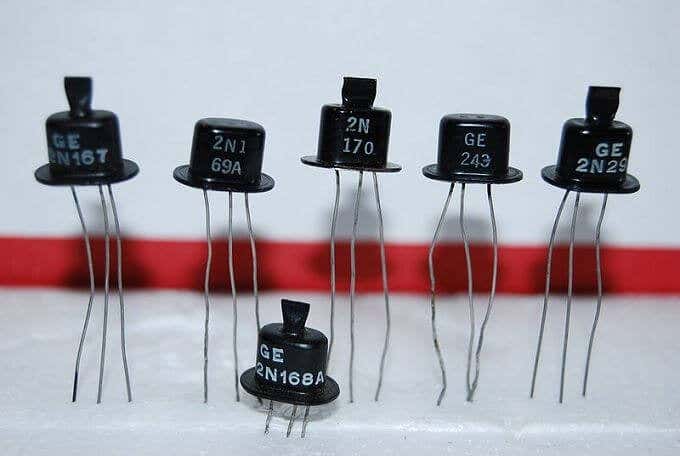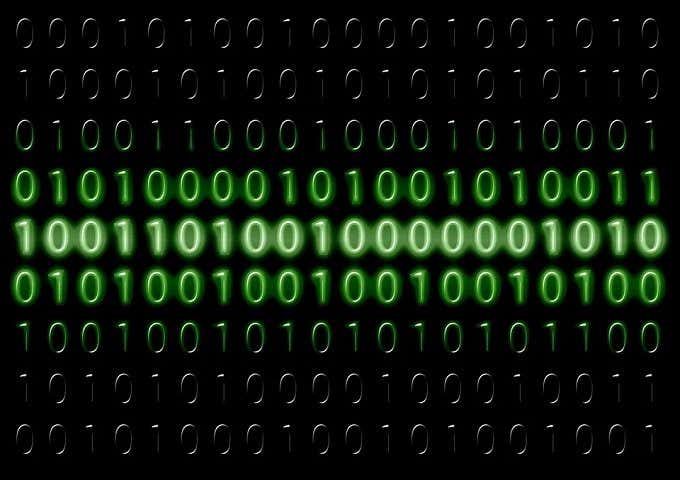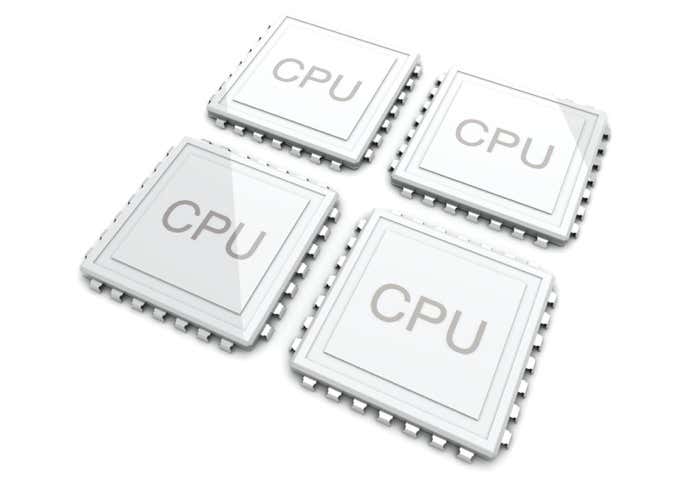Plus a very short history lesson
What is a CPU? The CPU or Central Processing Unit is the number-crunching brain of a computer. Everything a computer does, from playing video games to helping you write an essay, is broken down into a set of mathematical instructions. The CPU takes those instructions and executes them.
The details of how it does this is, of course, much more complicated than that simple explanation. The most important thing you need to know is that the CPU is the main mathematical engine of a computer.

The (Extremely) Short History Of CPUs
The history of computing is long and complex. It also goes further back into history than digital technology, electronics or even electricity. An abacus is a sort of processor. So are mechanical calculators. The big difference is that these machines can only do one or a few mathematical tasks. They aren’t general purpose processors, which the modern CPU is an example of.
What makes a CPU a general purpose calculation device is the use of logic. In 1903 Nikola Tesla patented electrical circuits known as gates and switches. Using these circuits, you could build devices that perform logical operations, where you could have the machine act on certain conditions.
In the mid- to late- 1940s William Shockley, John Bardeen and Walter Brattain invented and patented a device called a transistor, while working at Bell Laboratories. The transistor is the basic building block of a CPU. Transistors are relatively tiny computer components. The transistor is such an important invention that the three inventors were awarded a Nobel Prize for it.

In the late 1950s, Robert Noyce and Jack Kilby went one massive step further and created the first working integrated circuit. An integrated circuit is a set of electronic circuits integrated into a single piece of semiconductor material. In most cases, that material is silicon. This is what people mean when they say “microchip”.
A CPU consists of one or more microchips. This is an important invention because billions of transistors can be packed into a single CPU. This creates incredibly powerful mathematical engines.
Using the inventions of logic gates, transistors and integrated circuits, the entire world has been changed. Microchips are in everything these days, not just your computer. And CPUs are the most advanced general-purpose microchips we can make.
How Do CPUs Work?
The entire principle of a CPU is based on binary code. Human beings tend to represent numbers using a system called base 10 or the decimal system. The place values of each digit in a number go up by a factor of ten. So “111” contains one hundred, ten and one.

Computers and their CPUs can’t understand base 10 at all. Transistors work on the principle of either being on or off. Which means the logic gates you build from them can also only work with these two states. This is why, fundamentally, CPUs run on binary code. This number system has different place values. Instead if 1, 10, 100, 1000 and so on, the place values are 1,2,4,8,16,32,64,128 and so on.
So in binary “111” would be 7 in decimal numbers Since you add 1,2, and 4 together. If any of the numbers are a zero, you simply skip it and add the place value of the next 1. This way you can express any decimal value. Just note that binary numbers are often read from right to left, so the “1” place value would be at the far right.
Let’s put it in a table to make it crystal clear:
| Binary Place Values | 1 | 2 | 4 | 8 | 16 | 32 | 64 | 128 | 256 |
| The decimal number 7 in binary | 1 | 1 | 1 | 0 | 0 | 0 | 0 | 0 | 0 |
Can you see why it adds up to the number 7 in decimal? Let’s do the number 23:
| Binary Place Values | 1 | 2 | 4 | 8 | 16 | 32 | 64 | 128 | 256 |
| The decimal number 7 in binary | 1 | 1 | 1 | 0 | 1 | 0 | 0 | 0 | 0 |
So 111 is “7”, but “11101” is 23 because the fifth place value in binary is 16. Pretty cool, right? You can express any possible number that can be written in decimal this way. Which means computers built from transistors can work with any numbers as well.
How Are CPUs Made?
The production process of modern CPUs is also, as you’d expect, pretty complex. The basic process involves growing large cylinders of silicon crystal. Its semiconductor properties make it ideal for building a binary integrated circuit.
These large crystals are sliced into thin wafers. The wafers are then “doped” with another chemical to fine tune its properties. The nano-scale circuitry is then etched into the wafer surface using light using a process known as photolithography.
CPU Design and Performance
CPUs are not all made equal. The first proper ancestor of the modern CPU, the Intel 8086, had about 29 000 transistors in its integrated circuit. Today, a processor like the Intel i99900K has just over 1.7 billion transistors. The denser the logic circuits of a CPU, the more complex and higher the number of instructions it can perform per clock cycle.

Hang on, “clock cycle”? Yes, that’s the other major component of CPU performance. A CPU runs at a particular frequency, with each pulse of the CPU clock a cycle of calculations are done. If you take the same CPU and double it’s clock speed then (in theory) it should perform twice as fast.
That 1978 Intel 8086 ran at 5Mhz when it was launched. That’s five million clock cycles per second. The Intel i9-9900K? It starts at 3.6 Ghz.That 3600 Mhz, with the option to ramp things up to 5000 Mhz when possible.

To add yet another wrinkle to CPU performance, modern CPUs actually contain multiple “cores”. Each core is actually an independent CPU itself. It’s typical to have at least four such cores these days, but lately the norm has been for mainstream computers to have six or eight cores. High end professional computers may have in the region of a 100 CPU cores.
Having multiple cores means that the CPU can perform multiple sets of instructions in parallel. Which means our computers can do many things at once without issue. Some CPUs have “multithreaded” cores. These cores can themselves handle two separate tasks each. In Intel CPUs this is branded as “hyperthreading”.
So the total performance of a CPU comes down to a combination of:
- It’s total transistor count and how advanced the design of its logic circuits are
- The clock frequency
- The number of cores
- The number of threads
There is, of course, more to it than these four main points. However, those are the four main considerations for making a CPU perform well.
The Role of the CPU in Your Computer

The last thing we have to cover is what job the CPU plays in your computer. It is, after all, not the only integrated circuit microchip in your computer. For example, GPUs (graphics processing units) are often even more transistor-dense than a CPU.
They need their own cooling and power supply, as well as memory. It’s like a small extra computer! The same can be said for the chips that control your sound, USB and hard drive traffic. So why is the CPU special? These are the main reasons:
- It can process ANY instruction, a GPU only does certain types of processing
- It ties all the other components together, pushing and pulling data to make your computer work
- The CPU is involved with all work the computer is asked to do to some extent
In short, the CPU is the most important general-purpose performance component in your computer. Don’t take it for granted!





